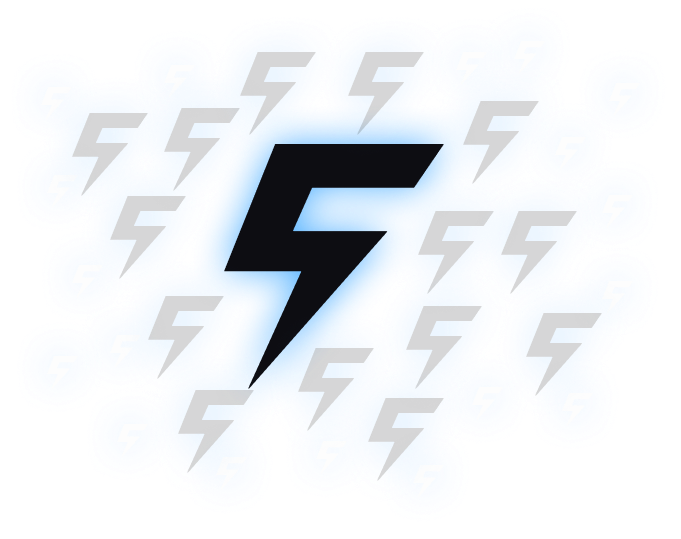
Table Of Contents:
- What Are the Main AI and Automation Pricing Models Used by Software Providers?
- How Do AI Automation Pricing Structures Differ Between Leading Software Vendors?
- What Factors Should SMBs Consider When Choosing an AI Automation Pricing Model?
- How Can Businesses Evaluate the Benefits and Costs of AI Automation Pricing Models?
- What Are the Industry-Specific AI Automation Pricing Examples and Trends?
- How Do Different AI Automation Tools Influence Pricing Models?
- Where Can SMBs Find More Information and Support on AI Automation Pricing?
- Frequently Asked Questions
None
A Comprehensive Guide to AI and Automation Pricing Models From Various Software Providers
Introduction The world of AI automation pricing can feel overwhelming when navigating the many options available. For small and mid-sized business owners and marketing managers, choosing the right model is critical for ensuring that your automation investments deliver cost savings and improved efficiency. This guide explains the different pricing models used in the industry, examines the nuances between providers like InnovateAI, UiPath, and Automation Anywhere, and offers insights on what factors should guide your decision-making process. You will learn how various cost structures affect overall value, performance, and return on investment (ROI), empowering you to negotiate and choose a model that fits your business needs.
Transitioning from the basics to real-world applications, this guide supports your digital transformation while ensuring every dollar spent upgrading your automation capabilities translates to measurable business success.
What Are the Main AI and Automation Pricing Models Used by Software Providers?
Selecting a pricing model for AI automation begins with understanding the primary options available—subscription-based, usage-based, tiered, per-feature, and flat-rate pricing. Each model offers distinct advantages, risk profiles, and ideal use cases based on your requirements, scale, and growth. Many providers now emphasize transparency and flexibility so that you can select a model that best aligns with your operations. For example, subscription-based pricing often offers lower upfront costs and predictable expenses, while usage-based pricing suits organizations with fluctuating demand.
What Is Subscription-Based Pricing and How Does It Work?
Subscription-based pricing is the most common model among AI automation vendors due to its predictability, ease of budgeting, and low entry barriers. You pay a fixed recurring fee—monthly or annually—to access software and services. This arrangement bundles maintenance, support, and updates, making cost management simpler. Nearly 70% of SMBs favor subscription models because they offer scalable plans; providers often include multiple tiers so you can start with basic features and upgrade as needed. This predictable cost structure benefits budgeting, resource allocation, and long-term planning.
How Does Usage-Based Pricing Differ From Other Models?
Usage-based pricing charges customers based on how much they use the tool rather than a fixed fee, making costs directly tied to consumption. This model is especially valuable for test phases or variable demand periods; for instance, during seasonal spikes, expenses can scale up or down without locking you into high fixed costs. Providers often calculate fees based on API calls, processing time, or transaction volumes using “pay-as-you-go” options. While it offers flexibility, careful monitoring is required to avoid unexpectedly high bills, particularly in unpredictable workflows or dynamic environments.
What Are the Features of Tiered Pricing Models?
Tiered pricing models offer multiple plans—ranging from basic to premium—with varying features and usage limits. This structure accommodates both small start-ups and larger enterprises by transparently outlining what additional investment brings in terms of functionality and support. A basic tier may cover standard automation while higher tiers include advanced analytics, enhanced security, and dedicated support. This clear benchmarking helps businesses choose a plan that matches their current needs without overpaying, adapting as operations grow.
How Does Per-Feature Pricing Affect Cost and Flexibility?
Per-feature pricing determines the cost by selecting individual features instead of a pre-bundled set. This highly customizable model ensures you only pay for what you need, such as enhanced reporting or specialized security modules. It suits businesses with specific automation requirements integrated into existing workflows. However, the complexity of choosing individual features may increase if too many options are offered. With proper planning, per-feature pricing can yield significant savings and better align expenses with value derived from each functionality.
When Is Flat-Rate Pricing Suitable for AI Automation?
Flat-rate pricing is the simplest model, offering access to all features for a single fixed fee regardless of usage. This model works best in environments with stable, predictable needs where budgeting and expense forecasting are straightforward. While it eliminates variable charges, flat-rate plans may be less flexible if usage fluctuates, potentially causing underutilization or overpayment. Such plans are common among mature businesses with standardized operations and provide uncomplicated cost certainty.
How Do AI Automation Pricing Structures Differ Between Leading Software Vendors?

Leading vendors design their pricing structures according to target markets, features, and scalability requirements. Providers like InnovateAI, UiPath, and Automation Anywhere balance flexibility with transparency so you clearly understand what you pay for.
How Does InnovateAI’s Pricing Compare to UiPath and Automation Anywhere?
InnovateAI positions itself as a modern, flexible option for SMBs with emphasis on scalability and low technical entry barriers. It uses a hybrid model that combines subscription pricing with usage-based add-ons to meet fluctuating needs. In contrast, UiPath and Automation Anywhere often have more established, premium pricing models that include extensive support, global deployments, and robust enterprise features. Your decision may hinge on whether cost efficiency and ease of scaling for SMBs (InnovateAI) or comprehensive integration and advanced analytics for larger enterprises (UiPath/Automation Anywhere) are more important to your business.
What Value Do Different Vendors Offer for SMBs?
For SMBs, vendor value includes not only cost but also ease of integration, user interface improvements, and customer-centric support. Vendors targeting SMBs focus on fast implementation, robust dashboards, and secure integration with existing ERP systems, enabling streamlined cost accounting and risk management. Real-world examples show that SMBs can see productivity gains and reduced downtime, with some reporting more than 30% increased efficiency within the first year.
Which Pricing Models Are Most Common Among Top AI Automation Providers?
Most top providers favor subscription-based and tiered pricing models because they offer predictable costs with the flexibility to upgrade as business needs grow. Additionally, many add usage-based incentives within these models to manage variable workloads. This blended approach helps maintain transparency and cost control, proving popular with SMBs due to its balance of initial cost management and long-term scalability.
How Do Integration and Scalability Impact Vendor Pricing?
Vendors that offer seamless integration with existing systems—like ERP software, CRM platforms, and supply chain management tools—typically charge higher prices due to reduced implementation risk and increased value. Scalability is also built into pricing, so as you add users or data throughput the cost per unit may drop. Although initial costs may be higher, the long-term savings from reduced integration time and maintenance often justify the expenditure, ensuring your automation strategy remains agile and cost-effective.
What Factors Should SMBs Consider When Choosing an AI Automation Pricing Model?
Choosing the right pricing model requires evaluating several factors including budget, usage volume, and ROI, along with long-term flexibility and operational impact.
How Does Budget Influence Pricing Model Selection?
Budget is the foremost driver when selecting an automation pricing model. SMBs with limited resources benefit from predictable fixed costs such as subscription or flat-rate models. These models eliminate high upfront fees and facilitate straightforward budgeting, allowing businesses to map out predictable expenditures. For those with flexible budgets facing variable demand, usage-based models may be more appropriate, though they require careful monitoring of consumption. Studies suggest that fixed pricing models can help constrained businesses achieve significant cost savings in their first year.
What Role Does Usage Volume Play in Pricing Decisions?
Usage volume directly influences total costs under usage-based models, where fees are tied to the intensity of service deployment. Businesses with sporadic high-volume needs might benefit from models that allow costs to fluctuate alongside activity, whereas steady operations may prefer flat-rate or subscription models for their predictability. An internal audit of current loads and future growth is essential to choosing the model that minimizes wasted expenditure and leverages economies of scale.
How Can SMBs Calculate ROI for Different Pricing Models?
Calculating ROI involves a detailed assessment of both direct cost savings and indirect benefits like efficiency improvements and reduced downtime. It requires itemizing all costs—such as support, integration, and maintenance—and estimating the productivity gains from automation. Many vendors provide ROI calculators that, by inputting estimated usage and integration costs, help project potential ROI improvements, often ranging between 30% to 50% in the first year when the pricing model closely aligns with operational demands.
What Are the Risks and How Can They Be Mitigated?
Each pricing model has inherent risks. For usage-based models, there is a risk of “bill shock” from unexpected usage spikes; for subscription models, the risk lies in paying for underutilized features. Mitigation strategies include implementing automated usage alerts, setting spend limits, and regularly reviewing and adjusting your subscription tier. Negotiating flexible contract terms and clear service level agreements (SLAs) can further reduce these risks, ensuring that your chosen pricing model remains aligned with your strategic and operational objectives.
How Can Businesses Evaluate the Benefits and Costs of AI Automation Pricing Models?

Evaluating pricing models is a multifaceted process that combines quantitative metrics with qualitative insights. Beyond the visible cost components, businesses must consider the impact on operational efficiency, productivity gains, and long-term savings.
What Are the Typical Cost Components in AI Automation Pricing?
Key cost components include subscription or fixed fees, usage-based fees, integration and support charges, and additional fees for premium features. Subscription fees usually cover access, updates, and standard support, while usage fees depend on processing power, transactions, or API calls. Integration costs and technical support charges further contribute to the total investment. Analyzing these components in a detailed table can help visualize expenditure and its impact on productivity and process efficiency.
What Are the Efficiency and Cost Savings Impacts of Pricing Models?
Different models impact efficiency by either enabling or constraining workflow automation. Subscription models provide predictable costs that streamline budgeting, while usage-based models ensure you pay only for actual use, leading to potential savings. Improved processing times and reduced manual tasks translate to labor savings and enhanced customer satisfaction. Many case studies have shown that optimized pricing can reduce operational costs by up to 35% while significantly boosting productivity.
What Case Studies Demonstrate ROI for SMBs Using AI Automation?
Real-world case studies illustrate that tailored pricing models can lead to dramatic ROI improvements. For example, a Canadian retail chain using a tiered subscription model reported a 40% reduction in manual processing costs, while a mid-sized healthcare provider adopted usage-based pricing for appointment scheduling and increased revenues by 25%. These examples underscore that, beyond cost, the benefits in productivity, customer engagement, and operational resilience are key to success.
How Can Interactive Tools Help Compare Pricing Options?
Interactive pricing calculators and comparison tools enable SMBs to input parameters such as usage volume, user count, and integration needs to derive estimated monthly or annual costs. These tools provide side-by-side comparisons and sensitivity analyses, helping you predict how small changes affect overall spend. By reducing analysis time and enhancing clarity, these resources allow for informed decisions that match operational realities with the most cost-effective pricing model.
What Are the Industry-Specific AI Automation Pricing Examples and Trends?
Industry-specific factors greatly influence pricing examples and trends. Providers tailor their pricing to meet the unique demands of sectors like manufacturing, finance, and healthcare, where operational variables and regulatory requirements differ.
How Is AI Automation Priced in Manufacturing?
In manufacturing, pricing is influenced by production volume, process complexity, and integration with legacy systems. Subscription and tiered models, often bundled with advanced analytics and predictive maintenance features, address continuous data needs and real-time adjustments in workflow. For example, predictive maintenance modules can reduce downtime significantly, while factors like data security and total cost of ownership are carefully integrated into premium pricing packages.
What Are Pricing Trends in Finance and Banking Automation?
The finance and banking sectors, operating in highly regulated environments, favor subscription models complemented by usage-based fees. Features such as fraud detection, secure data encryption, and compliance modules drive incremental costs. Improved transaction speeds and reduced operational costs—often by up to 30%—underscore the effectiveness of these blended models, with trends also showing a growing shift toward cloud-based and customer engagement solutions.
How Does Healthcare Automation Pricing Differ?
Healthcare pricing models are uniquely shaped by the need for strict data security, patient privacy, and regulatory compliance such as HIPAA. Providers offer comprehensive subscription-based models that integrate telehealth, patient management, and diagnostic automation. Even small efficiency gains—like automating lab result analysis—can boost processing efficiency by around 25%, making the cost structure comprehensive to ensure both operational benefits and necessary safeguards.
What Future Trends Are Emerging in AI and Automation Pricing?
Emerging trends include dynamic pricing models that combine fixed fees with real-time usage data and hybrid models allowing businesses to switch between flat-rate and usage-based plans. Providers are increasingly focusing on pricing transparency through online calculators and flexible contract arrangements. Moreover, the growing importance of value-based pricing means costs may soon be more directly tied to measurable business outcomes, aligning automation investments with predictable financial returns.
How Do Different AI Automation Tools Influence Pricing Models?

The pricing model you choose is heavily influenced by the type of AI automation tool you select. Whether it’s a customer service chatbot, marketing automation tool, or robotic process automation (RPA) solution, each tool type has its own pricing structure based on its functionality and integration requirements.
What Are the Pricing Models for Customer Service Chatbots?
Customer service chatbots are usually priced using either a subscription or per-interaction model. Pricing depends on factors like the number of conversations, natural language processing complexity, and integration with CRM systems. Tiered plans commonly offer basic text chat in lower tiers with advanced features such as sentiment analysis and multilingual support in premium tiers. This model provides predictable monthly costs while allowing add-on packages to accommodate peak demand.
How Is Marketing Automation Priced Across Vendors?
Marketing automation tools are typically offered on a subscription basis with tiers defined by the number of contacts, campaigns, and required advanced features such as AI-driven insights. Often, additional modules like advanced analytics are priced on a per-feature basis. This model supports greater personalization and higher conversion rates, with trial periods or freemium options allowing businesses to scale gradually as marketing needs increase.
What Are the Cost Structures for RPA Solutions?
RPA solutions usually combine subscription-based and usage-based models depending on the complexity of the tasks automated. Simple RPA tasks may attract flat monthly fees, while complex, data-intensive tasks use usage-based pricing to cover increased CPU and memory usage. With potential labor cost reductions of up to 40%, RPA pricing is designed to reflect setup ease, ongoing support, and integration with legacy systems.
How Do Data Analytics Dashboards Affect Overall Pricing?
Often packaged with broader automation tools, data analytics dashboards are usually included in higher-tier subscription plans or offered as add-ons. These tools provide crucial insights into key performance metrics and operational efficiency, which can justify higher pricing through the added value of improved decision-making and process optimization.
Where Can SMBs Find More Information and Support on AI Automation Pricing?
SMBs can navigate the complex world of AI automation pricing by leveraging various reputable resources and support channels. From vendor demos and interactive pricing calculators to review platforms and industry publications, a wealth of information is available to empower informed decision-making.
What Online Resources Provide Pricing Comparisons and Reviews?
Websites such as G2 Crowd, Capterra, and other dedicated vendor pages offer detailed pricing comparisons through feature lists, cost breakdowns, and user satisfaction ratings. These platforms combine white papers, case studies, and expert analyses to provide comprehensive market data, enabling you to benchmark vendor offerings effectively.
How Can SMBs Access Vendor Demos and Pricing Calculators?
Most vendors offer free demos and trial periods on their websites, presenting guided tours of their user interface, integration capabilities, and reporting features. Pricing calculators allow you to input user numbers, transaction volumes, and customization options, translating complex pricing structures into clear cost estimates. This hands-on approach helps compare multiple vendors side-by-side.
What Are the Best Practices for Negotiating AI Automation Pricing?
Effective negotiation involves thorough preparation by outlining specific requirements, expected usage, and key performance metrics. Use industry reports and vendor comparisons to understand current market pricing. Ask for flexible pricing options such as trial periods, performance rebates, or the ability to shift between models as needs change. Establishing clear SLAs and separating integration fees from core licensing costs further strengthens your negotiation position.
How Does Integration Support Influence Pricing and Adoption?
Robust integration support, including custom API integrations and post-deployment training, is a critical factor in reducing downtime and speeding up adoption. Vendors that offer comprehensive integration services usually charge a premium, but the benefits include smoother deployment, rapid ROI, and enhanced operational efficiency. Client case studies and vendor demos illustrate how effective integration support can significantly offset initial costs.
Frequently Asked Questions
Q: What is subscription-based pricing in AI automation? A: Subscription-based pricing is a model where you pay a fixed monthly or annual fee for continual access to AI automation software. This approach simplifies budgeting by providing predictable costs that cover software, maintenance, and support services.
Q: How does usage-based pricing work for AI automation? A: In usage-based pricing, you are charged based on your actual use of the software, such as per API call or transaction. This model suits businesses with variable operational levels, ensuring you pay only for what you use.
Q: What factors should be considered when evaluating AI automation pricing models? A: Key factors include your budget, expected usage volumes, integration needs, scalability requirements, and potential ROI. It’s important to assess both fixed costs and the additional benefits in efficiency and performance.
Q: How do tiered pricing models benefit SMBs? A: Tiered pricing models provide structured plans with varying features, allowing SMBs to choose a plan that suits their needs and upgrade later as their business grows. This structure avoids overpaying for unnecessary features while maintaining flexibility.
Q: What role do integration and support services play in vendor pricing? A: Integration and support services are essential for reducing downtime and ensuring smooth deployment. Vendors offering robust support typically charge a premium, but they significantly accelerate time to ROI and improve overall system performance.
Q: Can I switch between pricing models as my business grows? A: Many vendors offer flexible contract terms that allow you to transition between pricing models—for example, from a subscription model to a hybrid model combining fixed fees with usage-based add-ons—to better accommodate changing business needs.
Q: How can interactive pricing calculators help in making an informed decision? A: Interactive pricing calculators enable you to input specific parameters, such as user numbers and transaction volumes, to generate estimated costs. They offer side-by-side comparisons of different pricing options, helping you quantify potential ROI and choose the best model for your business.


